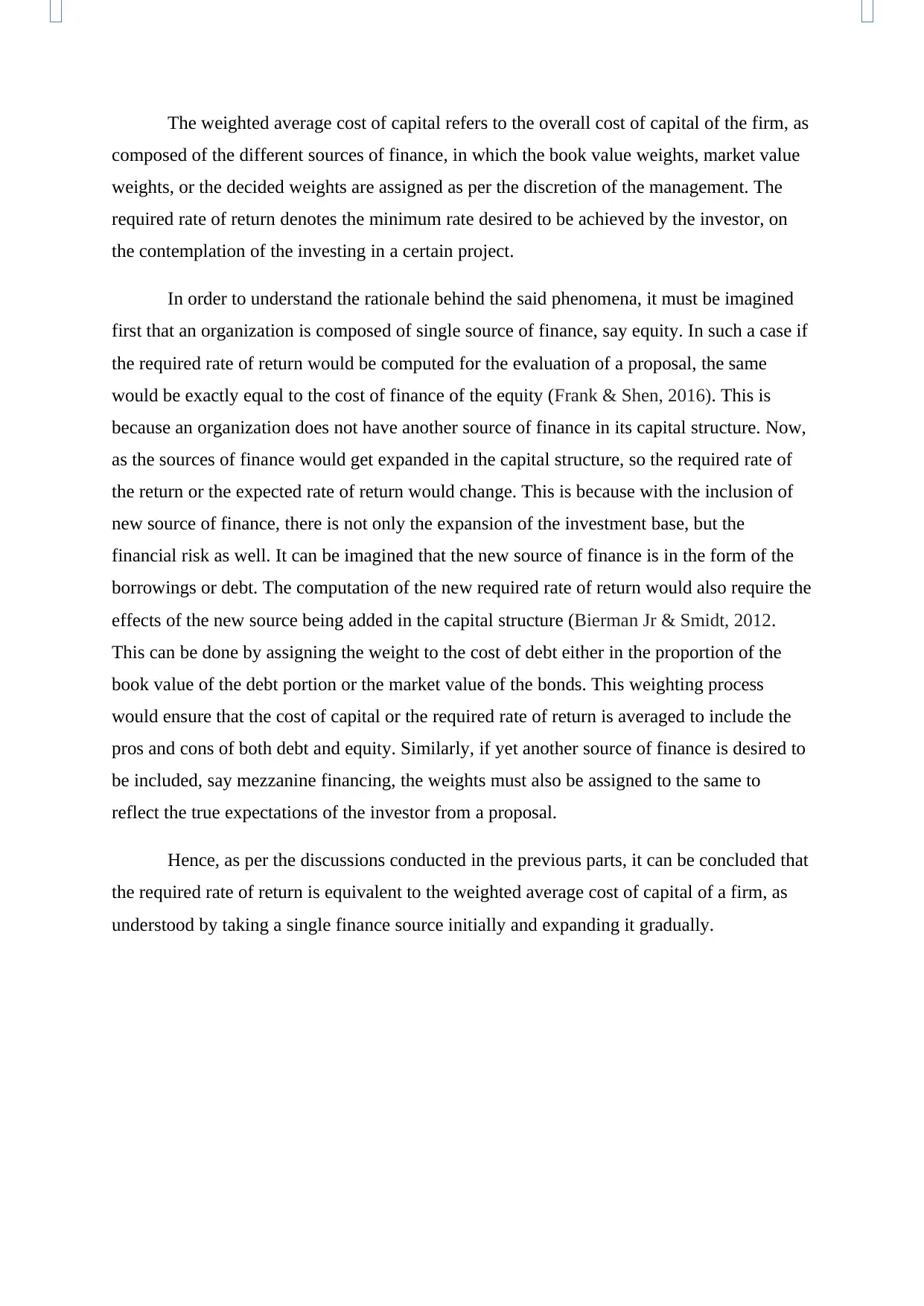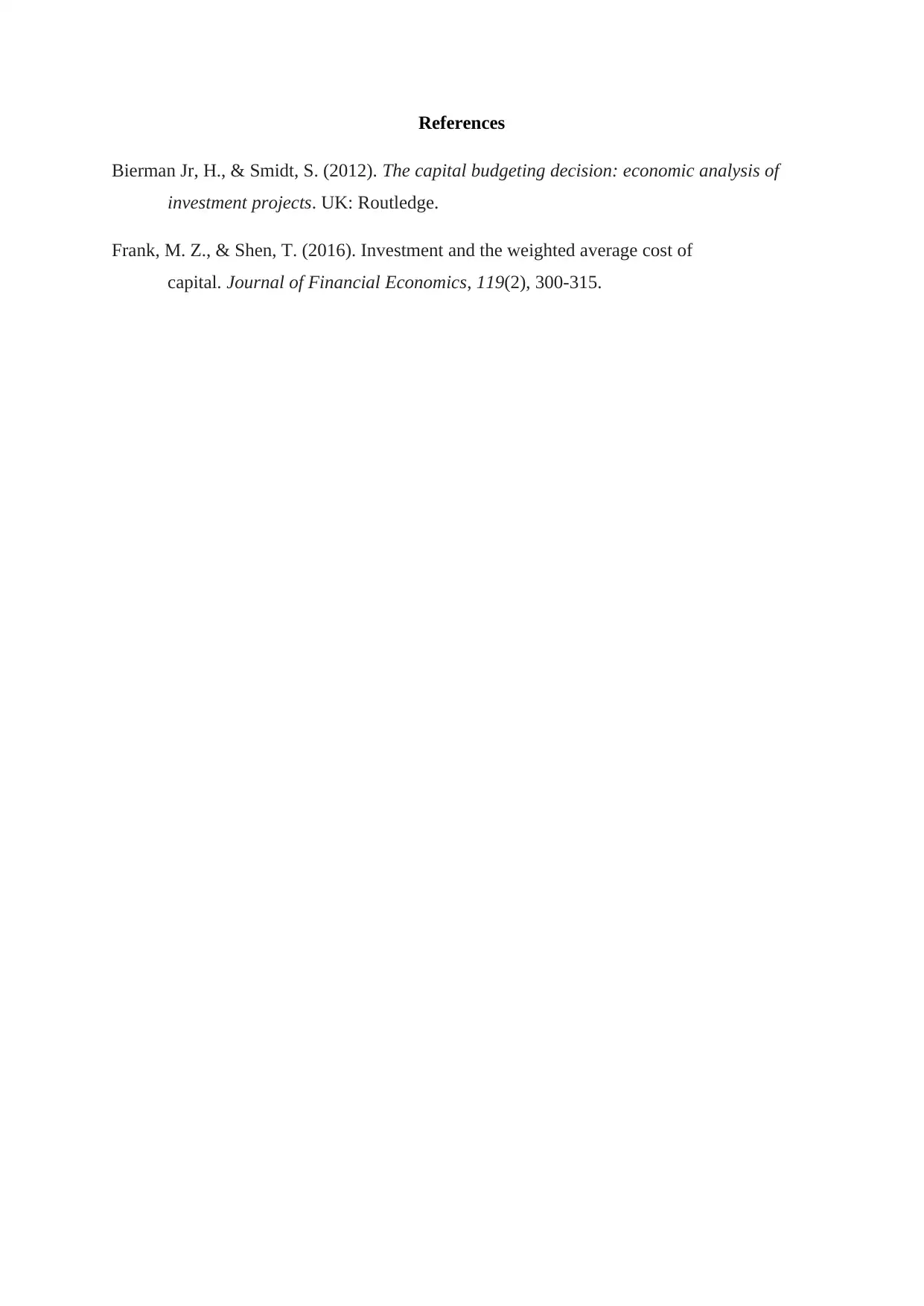Discussion: The Weighted Average Cost of Capital in Managerial Finance
VerifiedAdded on 2022/08/29
|3
|502
|16
Discussion Board Post
AI Summary
This discussion post delves into the concept of the weighted average cost of capital (WACC) and its significance in financial decision-making. It explains how the WACC, representing a firm's overall cost of capital, is derived from various sources of finance, such as equity and debt, each with its own associated cost. The assignment emphasizes that the required rate of return for an investment is closely linked to the WACC. Initially, the post considers a scenario with a single source of finance (equity) and then gradually expands to include debt and other financing options, illustrating how the inclusion of each source impacts the overall required rate of return and the WACC calculation. The post highlights the importance of assigning appropriate weights to each source of finance, reflecting their respective proportions in the capital structure to accurately reflect investor expectations and project evaluation. The post also references key literature supporting these financial concepts.
1 out of 3










![[object Object]](/_next/static/media/star-bottom.7253800d.svg)